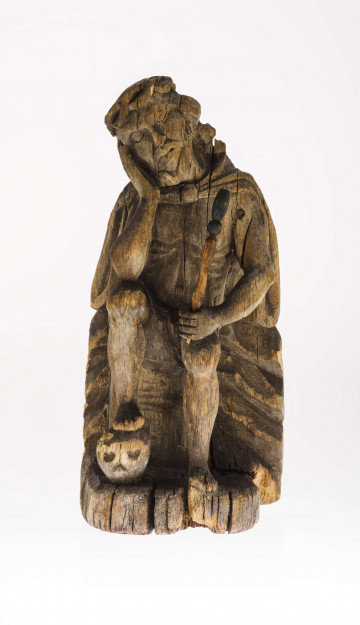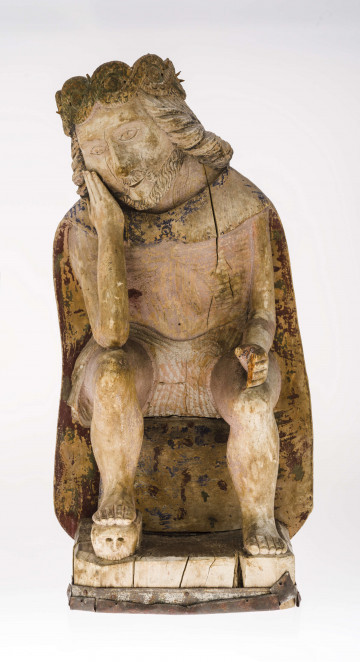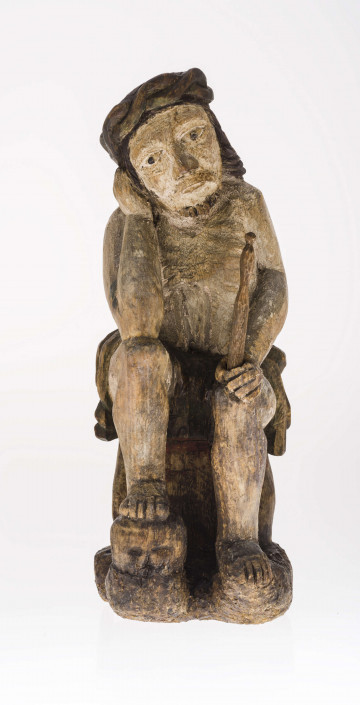
Pensive Christ
1801 — 1850
National Museum in Lublin
Part of the collection: Folk Art of the Lublin Region (17th–1st half of the 20th c.)
There was also a group of itinerant carvers. In the Lublin region there were many of the former and the latter at the turn of the 19th and 20th century, but they remained anonymous, few names have survived: Paweł Bień (1828-1886), Mikołaj Gomiela (1843-1908), Józef Kwiatkowski (2nd half of the 19th century), Jan Kaproń (1866-1941), Jan Oliński (turn of the 19th and 20th centuries), Daniel Kuźmiuk (1857-1939).
Daniel Kuźmiuk was born in Żerocin, in the former Radzyn (now Biała) District, to a family of farmers. In 1864, the family moved to Drelów, where his father took up a job of a forn-keeper. During a cholera epidemic in 1873 he died, leaving behind a wife and four children. Sixteen-year-old Daniel, in order to provide for his mother and siblings, started working as a farmhand. In his spare time, he carved figurines, crosses, and miniature animals. In 1893, he married Pelagia Byczyk, bought a disused blacksmith's shop, which he dismantled and then erected in the garden as a one-room house. He gave up his job at the manor and took up sculpting. During the first winter he carved the statue of St. John. Next to the house he built a shed for firewood and carving material. He was fascinated by books and, although he could not read, he spent every penny he saved on buying them. His book collection was dominated by religious books, such as Żywoty świętych (Lives of the Saints), but also travel and geography books and Ogniem i mieczem (With Fire and Sword), which his daughter Marta used to read to him.
His oeuvre includes around a thousand sculptures. Most of them are Christological and Marian saints' statues as well as images of patron saints placed in the chapels of the nearby villages of Żerocin, Żeliźnie, Przechodzisko and Szóstka and in the cemetery. His work was the now non-existent roadside cross in Drelów with the tools of the Passion of Christ. He carved figurines of animals and toys. Due to an eye disease his activity decreased after 1930, six years later it stopped when he lost his sight. Until his last days he was widely respected in Drelów and its surroundings. Several works donated to the Museum will allow his name to be perpetuated in the consciousness of posterity.
Author / creator
Dimensions
cały obiekt: height: 43 cm
Object type
sculpture
Technique
polychromy
Material
wood
Creation time / dating
Creation / finding place
Owner
The National Museum in Lublin
Identification number
Location / status

1801 — 1850
National Museum in Lublin

1862
National Museum in Lublin

1801 — 1900
National Museum in Lublin
DISCOVER this TOPIC
National Museum in Szczecin
DISCOVER this PATH
Educational path